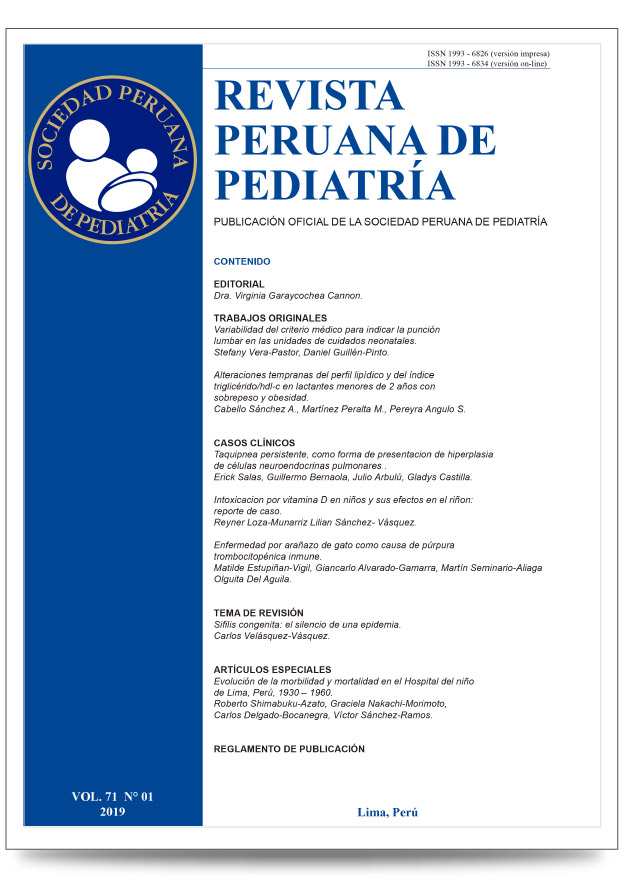Persistent tachypnea, as a form of presentation of pulmonary Neuroendocrine cell hyperplasia
DOI:
https://doi.org/10.61651/rped.2019v71n1p21-24Keywords:
Tachypnea, Infant, Neuroendocrine Cells, Lung Diseases, InterstitialAbstract
Interstitial lung diseases encompass a wide set of entities, with relatively similar clinical characteristics, in this context, pulmonary neuroendocrine cell hyperplasia presents with tachypnea, traces, crepitos or subcrépitos, wheezing and sometimes hypoxemia, requiring in some cases to be hospitalized . Pulmonary tomography shows ground glass images of the middle lobe and lingula.
The case of a male patient aged 1 year and 7 months is presented, who presented tachypnea from birth, multiple visits and hospitalizations due to recurrent wheezing.
The clinical picture and the images are highly suggestive of the diagnosis, the episodes of wheezing may be part of the clinical picture of this entity; however, they could be related to virus-induced wheezing.
Downloads
Downloads
Published
How to Cite
Issue
Section
Categories
License

This work is licensed under a Creative Commons Attribution 4.0 International License.
Authors will retain the copyright and grant the right to publish their work in the journal while allowing third parties to share it under the Creative Commons Attribution license.
Articles are published under a Creative Commons license that allows sharing and adaptation with appropriate credit. CC BY 4.0 license. Available in English at https://creativecommons.org/licenses/by/4.0/
Authors may use other information disclosure formats as long as the initial publication in the journal is cited. The dissemination of the work through the Internet is recommended to increase citations and promote academic exchanges.
The published content does not necessarily reflect the specific point of view of the journal, and the authors assume full responsibility for the content of their article.




